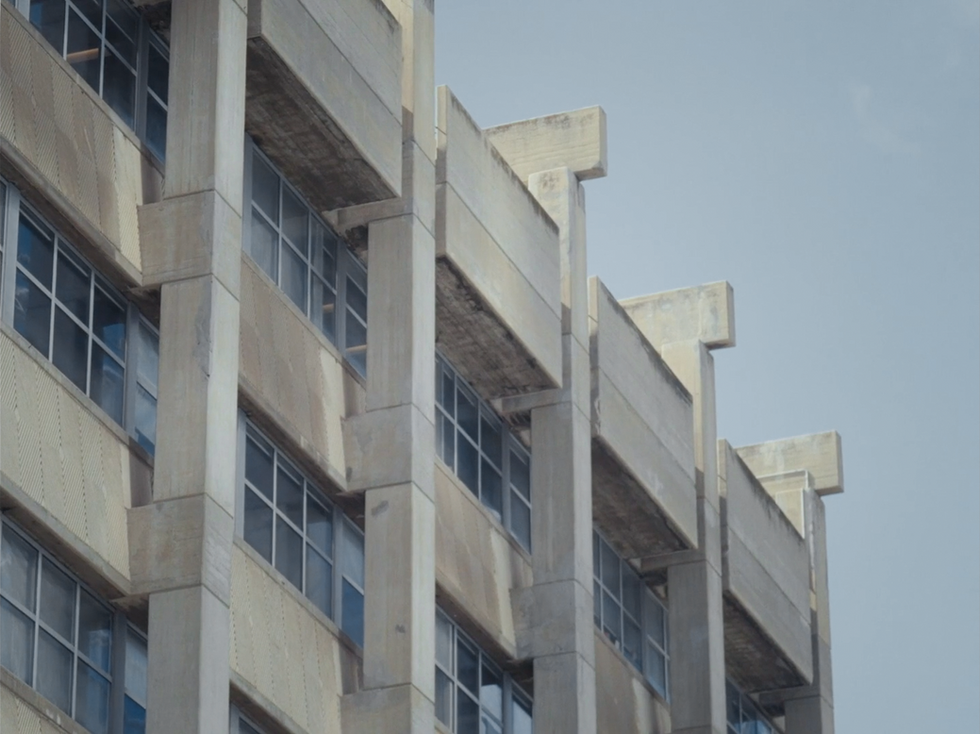On the Bridge
The video opens with a scene showing a cleansing act: Chefetz is seen washing his body in the middle of a large, empty, unidentified industrial space. The water pooling at his feet reflects his body, in a shot that nods to the opening scene of Roma, a film by director Alfonso Cuarón, which examines the place of a servant within a wealthy family unit and her degree of belonging (or estrangement) to the household in 1970s Mexico City. In the servant's mop water, the sky is reflected through a large, illuminated window, with a distant airplane crossing it.
Later in the work, Chefetz is seen dressed in blue work clothes, embodying the figure of the kibbutz worker, wandering like a vagabond at the foot of brutalist public buildings around Tel Aviv: he passes by the Executive Council House, the National Kibbutz House, the Jewish Agency and more. The meeting between the Kibbutz worker and Brutalist architecture has contradictory readings: at first glance, there is a clear tension between the solitary person, torn from his natural environment, so different than the big city and its monumental buildings representing the institutions of the state. However, these buildings, associated with the early days of the state and institutions connected to the settlement movement, support and enhance the worker’s existence in the video.
Architects Jeremie Hoffmann and Hadas Nevo-Goldberst open their book Aphoria: Architecture of Independence - with the following description: "With the end of World War II, the door opened to a renewed view of the devastated world; no more 'white' utopias and hope for ideal living conditions for the modern man that characterized the days between the world wars. The immediate need for housing for hundreds of thousands of refugees and citizens whose cities were bombed required systemic solutions of a different kind." Although this description refers to a completely different period, it seems to serve as an adequate background for the contemporary video work; On the Bridge was created at a time when tens of thousands of Israelis were evacuated from their homes, many of them from kibbutzim and moshavim. It seems that in these times, no landscape is more fitting for the figure of the homeless kibbutznik: the experience of displacement seems almost embedded in the DNA of Brutalist design.
During his wanderings in the city, the worker carries cardboard boards on his back: perhaps seeking to build himself a temporary shelter, like the one standing in the center of the gallery. After the long and exhausting carrying, with an unclear purpose, he is seen running forward on a bridge over the Ayalon highways, shaking off and shedding emotional burdens. The bridge is an intermediate space - a connecting element between two disconnected ends, which stands in the landscape almost as an independent unit, surrounded only by the air currents passing above and below it. This contrast between detachment and connection is also evident in the filming style throughout the video: handheld, creating a shaky, unstable, fleeting frame— against massive buildings with solid, heavy historical context. The run on the bridge, from one end to the other, echoes a transitional stage between states of consciousness, touching the heart of the nomadic experience, and through it, Chefetz reflects a sense of belonging everywhere and nowhere at the same time.
2024, video, 09:18 min.
Director of photography and editing: Omer Weiss
Original music and sound design: Gal Lev






